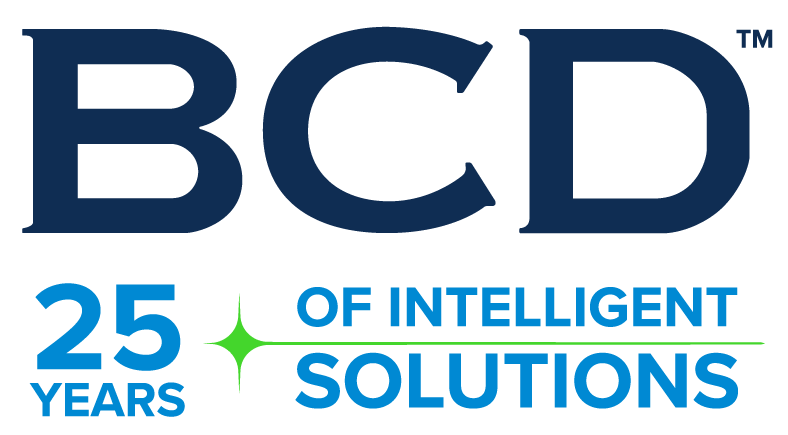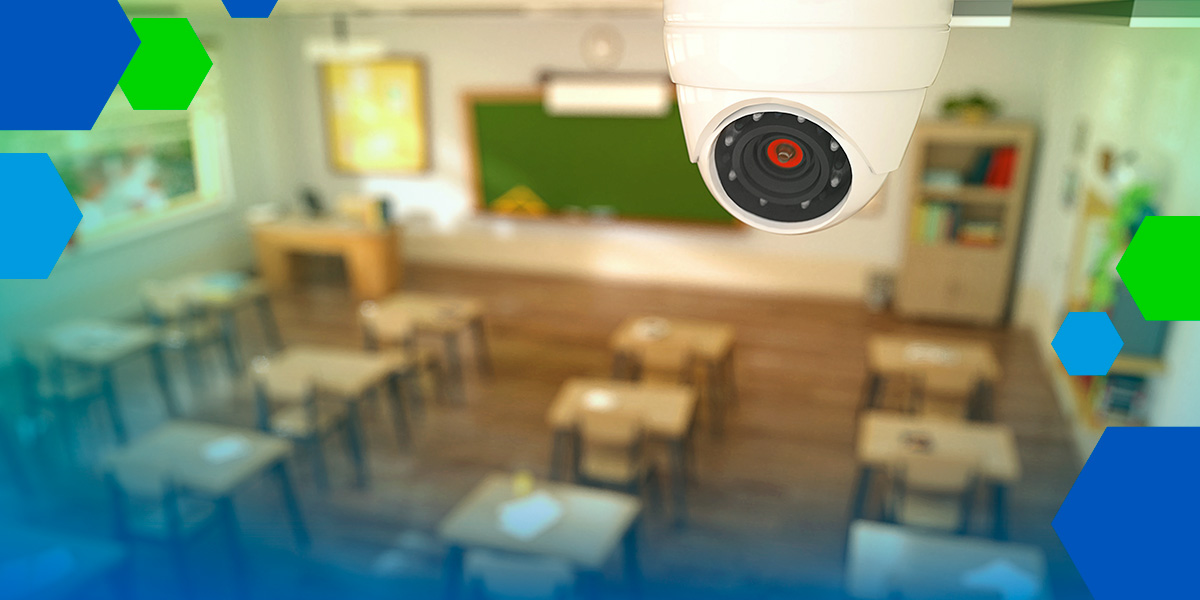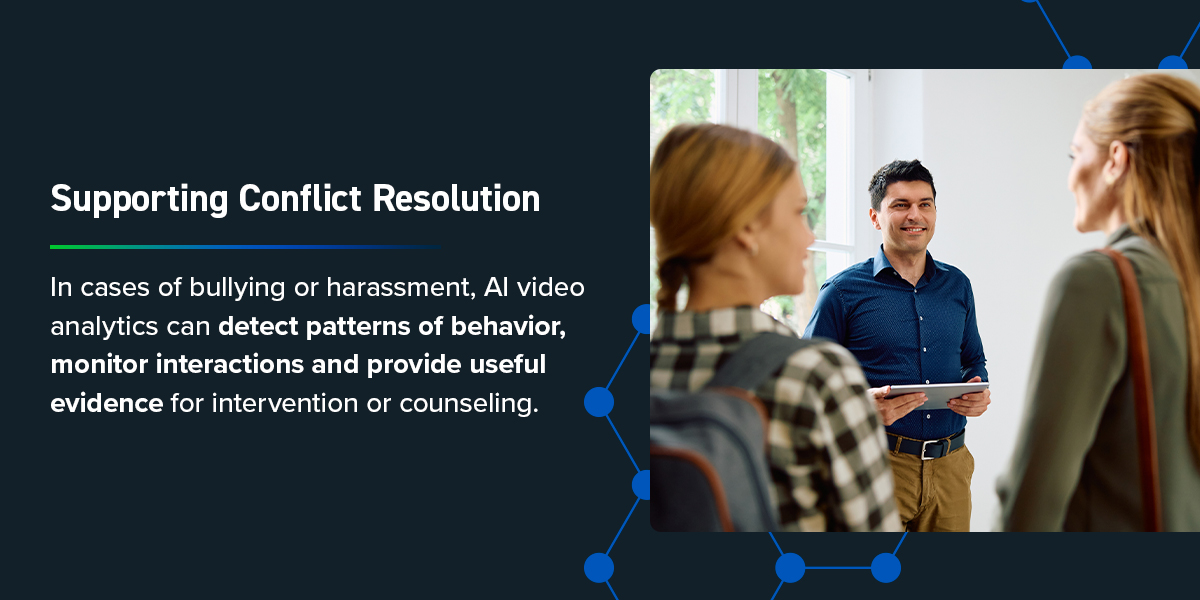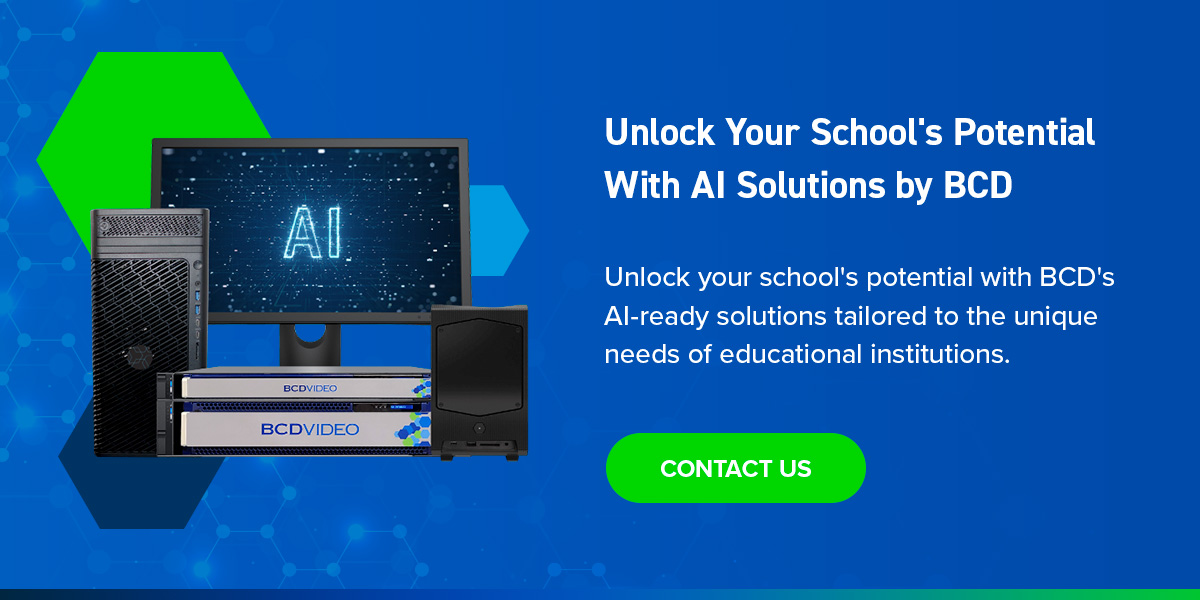Educational institutions are witnessing an ever-growing technology integration — be it interactive whiteboards or online learning platforms. It’s clear that technology is reshaping how we teach and how students learn.
Now, let’s zoom in on a different branch of technology used in education — video analytics. Imagine a tool that captures video and analyzes captured footage using artificial intelligence (AI).
Video analytics in K-12 education can gain insights and identify patterns that could help school safety, security and operations. And by utilizing AI, education video analytics systems can detect anomalies, monitor campus activities and aid in incident investigations.
This technology goes beyond watching recorded footage — it’s about leveraging technology to create safer, more efficient learning environments for students. This article dives deeper into AI video analytics in school security so you can decide whether it’s right for you.
Understanding AI Video Analytics
Video analytics monitors, analyzes and manages massive amounts of video using modern algorithms and machine learning (ML). It’s like having an intelligent security assistant that watches over your school campus 24/7.
Now, let’s look at the critical components of a video analytics system. You’ve got your cameras — which are the eyes of the operation, capturing all the action. Then, there are sensors that pick up additional data, such as motion or sound. But the real magic happens with AI-powered analytical software.
Video analytics is the brain behind the cameras, helping them do more than record footage. With AI in the mix, video analytics becomes even more powerful. AI adds a layer of brain power by teaching the system to recognize patterns, identify objects and understand human behavior.
Applications in K-12 Education
The use of AI in education in conjunction with video analytics can create safer learning environments where students can thrive and succeed. Here is how AI video analytics can be used in K-12 education.
Enhancing School Security
AI video analytics constantly monitor the school’s activities to ensure the safety of its students and staff. It can flag anything out of the ordinary. For instance, someone lingering in a restricted area or a sudden change in lighting. It can even recognize faces or license plates, helping to track down missing students or identify unauthorized visitors.
By constantly scanning the premises, AI video analytics is a proactive measure against potential threats. This approach helps maintain a secure environment for teaching and learning.
Facilitating Incident Investigation
In the unfortunate event of an incident, such as bullying, theft, or vandalism, AI-based video analytics can expedite and streamline the investigation process. Analyzing video footage can provide vital insights into events, assisting authorities in resolving conflicts and responding to situations quickly.
For example, AI video analytics can provide valuable insights into a physical altercation. It can help identify the participants, trace their activities and give critical evidence for disciplinary action or legal procedures. AI video analytics speeds up the investigative process by quickly analyzing large volumes of data, ensuring a thorough and correct reaction to accidents.
Supporting Conflict Resolution
AI video analytics offers objective, evidence-based insights into interpersonal disputes or disciplinary issues. By analyzing video evidence, it is possible to uncover the root causes of conflicts. Video footage can also estimate the severity of situations and support constructive solutions.
For example, in cases of bullying or harassment, AI video analytics can detect patterns of behavior, monitor interactions and provide useful evidence for intervention or counseling. With its ability to recognize subtle cues and behaviors, these systems help institutions efficiently manage problems. As a result, it can promote a secure and inclusive learning environment for all students.
Enabling Emergency Response
AI video analytics ensures a timely and coordinated response during crises, such as fire drills or lockdowns. Monitoring crowd behavior and identifying potential threats or bottlenecks enables authorities to assess the situation and apply relevant safety measures.
For example, during a lockdown, AI video analytics may follow individual movements, detect security breaches and offer real-time information to first responders. AI video analytics improves the effectiveness of emergency response systems by analyzing complicated circumstances and providing actionable insights.
5 Benefits for Educators and Administrators
Video analytics in K-12 education benefits students, educators and administrators alike. Here are five advantages to remember:
1. Enhanced Safety and Security
AI-powered security solutions add an extra layer of protection by continuously monitoring activity and detecting potential threats in real-time. These systems operate as vigilant watchdogs, identifying unauthorized individuals and detecting aberrant behavior patterns to prevent situations from escalating.
2. Efficient Resource Allocation
AI video analytics optimizes resource allocation by giving helpful information on campus operations and utilization. Administrators can make better resource allocation, scheduling and facility management decisions based on various metrics. These metrics include student movement, facility usage and traffic patterns. This results in more efficient resource use, better logistical planning and increased productivity.
3. Data-Driven Decision-Making
AI video analytics helps institutions make data-driven decisions by analyzing large volumes of data quickly and accurately. For instance, these systems can help customize instructional tactics, identify growth areas and personalize student learning experiences.
This is made possible by video analytics’ actionable insights into student behavior, academic performance and campus dynamics. Similarly, admins can utilize data analytics to evaluate policy efficacy, monitor key performance indicators (KPIs) and promote continuous improvement throughout the school ecosystem.
4. Proactive Intervention and Support
Educators can help children achieve academically and emotionally. Video analytics can help monitor student behavior patterns, spot symptoms of discomfort or disengagement and highlight possible problems early on. This proactive approach to student support creates a positive learning environment where all students feel appreciated and encouraged to achieve their full potential.
5. Streamlined Operations and Workflow
AI video analytics improves operations by automating regular tasks and optimizing workflow processes. AI-powered security tools can automate routine tasks like visitor access and tracking school attendance. Automation allows educational institutions to focus on more strategic objectives. As a result, it can lead to smoother operations and higher employee morale.
Challenges and Considerations
Implementing AI video analytics in K-12 education comes with its challenges. Here are the potential hurdles and considerations of education video analytics:
- Privacy concerns: Schools must establish policies and procedures for data collection, storage and usage. They must comply with relevant regulations such as the Family Educational Rights and Privacy Act (FERPA). Also, implementing data encryption and access controls can safeguard sensitive information.
- Resource constraints: Limited budgets and resources can pose challenges when adopting AI video analytics. Schools can overcome this by exploring cost-effective security technology solutions. They can also leverage open-source software and seek partnerships with technology providers. Training staff and educators on using AI tools effectively may also help.
- Technical limitations: Technical challenges may arise, such as compatibility issues and system integration complexities. Schools should conduct thorough testing and pilot programs to identify and address technical hurdles early. Work with experienced vendors or seek expert guidance to help mitigate these technical risks.
- Ethical use of AI: Schools must prioritize transparency, fairness and accountability when implementing AI video analytics. Educating stakeholders on the ethical implications of AI technology and cultivating an ethical decision-making culture are critical steps in promoting responsible AI use in education.
Unlock Your School’s Potential With AI Solutions by BCD
With its capabilities, AI video analytics can transform K-12 education. Unlock your school’s potential with BCD’s AI-ready solutions tailored to the unique needs of educational institutions.
Since 1999, BCD has been at the forefront of purpose-built video storage solutions. We partner with globally known security pioneers to provide AI video surveillance systems. With our security technology and commitment to customer satisfaction, schools can create safer, more engaging learning environments for their students.
Contact us online today for further information.



